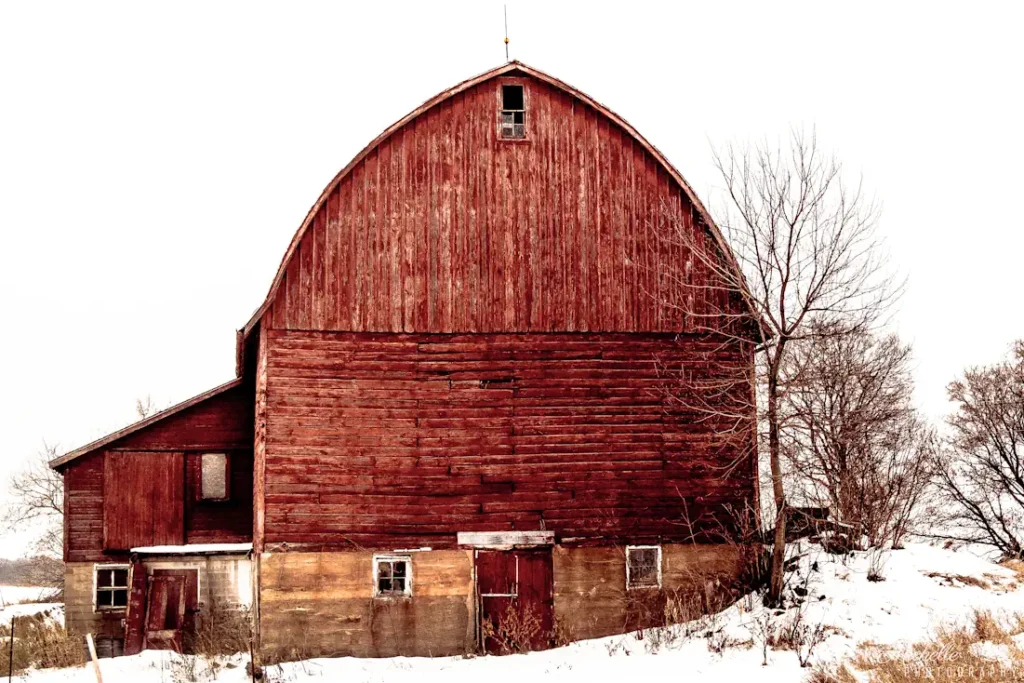Reclaimed barn wood has become a highly sought-after material for homeowners, designers, and builders. Its unique character, rich history, and sustainable nature make it an ideal choice for various projects, from rustic furniture to modern architectural elements. But what exactly makes reclaimed barn wood so special? Let’s delve into the fascinating world of reclaimed barn wood, exploring its origins, characteristics, and the reasons behind its enduring appeal.

Why is Reclaimed Barn Wood Grey?
One of the most distinctive features of reclaimed barn wood is its weathered grey appearance. This characteristic grey patina is the result of years of exposure to the elements. Sun, rain, wind, and snow all contribute to the aging process, creating a natural, time-worn look that cannot be replicated by modern techniques. The grey color is not just a surface feature; it penetrates the wood, giving it depth and character that adds to its charm.
The History of Barn Paint: Red and Beyond
When we think of traditional barns, the iconic red color often comes to mind. But why were barns painted red? The answer lies in practicality and tradition. In the early days, farmers used a mixture of linseed oil, milk, and rust (iron oxide) to create a protective coating for their barns. The rust acted as a preservative, preventing mold and mildew, and gave the paint its distinctive red color. This homemade paint was both effective and economical, leading to its widespread use.
Milk paint, another traditional paint used on barns, was made from milk protein (casein), lime, and natural pigments. It was durable, easy to make, and provided a matte finish that aged beautifully over time. The use of milk paint and other natural finishes contributed to the unique appearance of reclaimed barn wood, adding layers of history and character.
Species of Wood Used in Barn Construction
The types of wood used in barn construction varied depending on the region and availability. Common species included oak, pine, chestnut, and hemlock. Oak was prized for its strength and durability, making it ideal for structural elements like beams and posts. Pine, with its straight grain and ease of workability, was often used for siding and flooring. Chestnut, once abundant in North America, was valued for its resistance to decay and insect damage. Hemlock, known for its light weight and strength, was commonly used in framing.
Each species of wood brought its own unique characteristics to the barn, contributing to the overall aesthetic and functionality. The diversity of wood types found in reclaimed barn wood adds to its appeal, offering a variety of textures, colors, and grain patterns.
Construction Methods: Hewing and Rough Sawing
The construction methods used in building barns also played a significant role in shaping the appearance of reclaimed barn wood. Two primary techniques were hewing and rough sawing.
Hewing involved shaping logs with hand tools like axes and adzes. This labor-intensive process created beams with a distinctive, hand-hewn texture, characterized by irregular, faceted surfaces. The marks left by the tools tell a story of craftsmanship and hard work, adding to the wood’s historical value.
Rough sawing, on the other hand, involved cutting logs into boards using large saws. This method produced wood with a rough, textured surface, often bearing the marks of the saw blades. The combination of hewing and rough sawing techniques resulted in a variety of textures and finishes, giving reclaimed barn wood its unique character.
The Transformation of Tools: From Hand Tools to Mechanization
The history of barn construction is also a story of technological evolution. In the early days, barns were built using hand tools, requiring immense skill and labor. Carpenters and builders relied on axes, adzes, chisels, and saws to shape and assemble the wood. This craftsmanship is evident in the intricate joinery and hand-hewn beams found in many reclaimed barn wood pieces.
As technology advanced, mechanized tools and sawmills became more common. The introduction of circular saws and steam-powered mills revolutionized the process, making it faster and more efficient. This shift allowed for the mass production of lumber and standardized construction practices. However, the charm and character of hand-crafted barns remained unmatched, making reclaimed barn wood from this era highly prized.
The Modern Demand of Reclaimed Barn Wood
Today, reclaimed barn wood is celebrated for its sustainability and unique aesthetic. By repurposing wood from old barns, we reduce the demand for new lumber, preserving forests and minimizing waste. Each piece of reclaimed wood carries a story, connecting us to the past and adding a sense of history to our homes and projects.
Reclaimed barn wood offers a blend of history, beauty, and sustainability that is hard to match. Its weathered grey patina, rich variety of wood species, and the craftsmanship evident in its construction make it a unique and valuable material. Whether you’re building furniture, creating an accent wall, or designing a custom piece, reclaimed barn wood brings a touch of the past into the present, adding character and charm to any project.


Comments